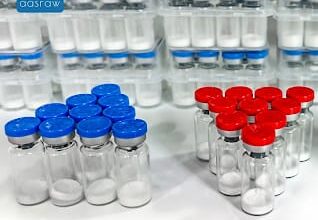What is Static equipment in Oil & Gas?

If you analyse all heavy engineering processes, you will realize that the types of equipment used are almost similar. These projects rely on static and rotating equipment to build a single operational unit. Static equipment makes up the majority of mechanical equipment you find in oil and gas facilities. They take up most of the operational and maintenance budget, considering the heavy usage. This equipment comprises pressure vessels, heat exchangers, coolers, and boilers, and you must understand what they are before installing them. Here is a breakdown of static equipment, specifications, and maintenance.
Static Equipment in Oil and Gas
Static equipment, also known as fixed equipment, refers to the non-moving equipment in the gas and oil processing industries. Some equipment under this category includes pressure vessels, piping, heat exchangers, and storage tanks. However, a few non-moving parts are not considered static equipment. They include compressors, pumps, and electrical equipment.
Types of Static Equipment in Oil and Gas
Shell and Heat Tube Exchangers
Shell and heat tube exchangers are typically designed for providing high-pressure capabilities in the heat transfer processes. They are used in the gas and oil industry for transferring heat in various applications. This static equipment in oil and gas should therefore cover all the necessary customer standards.
Air Cooled Heat Exchangers (ACHE)
Air-cooled heat exchangers have the option to directly transfer heat into the atmosphere instead of a closed or open water system. This static equipment has rectangular bundles with multiple tubes, specifically finned tubes.
The heat transfer in ACHEs is a countercurrent where the hot fluid enters through the top of the bundle, and air flows vertically upwards through the bundle with the help of fans. Air-cooled heat exchangers are used primarily in the oil and gas industries.
Boilers
Boilers are closed vessels that operate by heating fluids. The vapourised/heated fluids are then used in various applications depending on the system specifications. Therefore, the design and construction of boilers entirely depend on the customer’s specifications.
Boilers are always built using the latest technology to ensure minimal maintenance costs while enhancing efficiency and reliability. Safety functions are also fully compliant with the project’s statutory requirements.
Plate Exchangers
Plate exchangers combine cylindrical shells’ pressure and temperature capabilities with a plate heat exchanger’s optimum heat transfer performance. These products are used in oil production, heating, cooling, and heat recovery. The design and construction must follow project specifications to ensure high heat transfer rates and a good flow rate.
Pressure Vessels, Columns, and Towers
Pressure Vessels are enclosed, rigid containers built to hold oil and gases at given pressures. This gas processing equipment must conform to the required pressure ranges and comply with industry standards.
Separators are the heavy-wall materials used to separate gases and fluids in the exploration and processing of oil and gas. In addition, some storage vessels absorb pressure fluctuations to protect the system from hazardous malfunctions.
Static Equipment Specifications
Design Temperature
The design temperature for static equipment in oil and gas is set at 15-20 degrees C above the constant operating temperature. It does not consider accidental temperatures that occur within a short duration, during startup, shutdown, or emergencies. The design temperature must also consider the possible bypass of the upstream heat exchange for cleaning.
Minimum Design Metal Temperature (MDMT)
The MDMT is the lowest between the minimum fluid temperature and the temperature from auto refrigeration during fast depressurization in an emergency gas leak. Clients should pay attention when selecting the correct MDMT because a lower MDMT rating could result in material changes. In addition, impact tests and heat treatment may add costs when using carbon steel.
The MDMT does not have to conform to the minimum ambient site temperature in cooler climates. Slowly starting the equipment can warm it up while raising the internal pressure. Therefore, a defined startup procedure should be set to warm up the equipment before applying full pressure.
Types of Heads
2:1 elliptical heads are suggested because they are cost-effective for vessels with low-wall-thickness. When selecting the type of heads, the process engineer should only pay attention to the volume. Hemispherical heads are economically viable for high-pressure applications of 600 lb. and above.
Cyclic Service
Aversive measures must be taken to prevent failure from fatigue when a vessel is exposed to a higher pressure/temperature cycle of around ~100,000. These measures cover specific welds like additional nondestructive evaluation (NDE) and full penetration. In addition, the pressure vessel code must indicate the number of cycles classifying the cyclic vessel service.
Static Equipment Maintenance
Static equipment in oil and gas is mainly subjected to extreme operating conditions and varying damage mechanisms. In most cases, the damage may not be immediate, considering damage rates are non-linear. For example, corrosion under-insulation (CUI) damage develops over time and cannot be noticed immediately.
Static equipment lack complex real-time sensors for monitoring corrosion or damage. Therefore, static equipment should be monitored by inspection in fixed intervals.
Once you internalise static equipment data, your production needs become much clearer. Even with a team of expert engineers, finding a reliable static equipment manufacturer can help you achieve better results with personalised equipment. Ensure you go through the datasheet to understand what you are getting.




